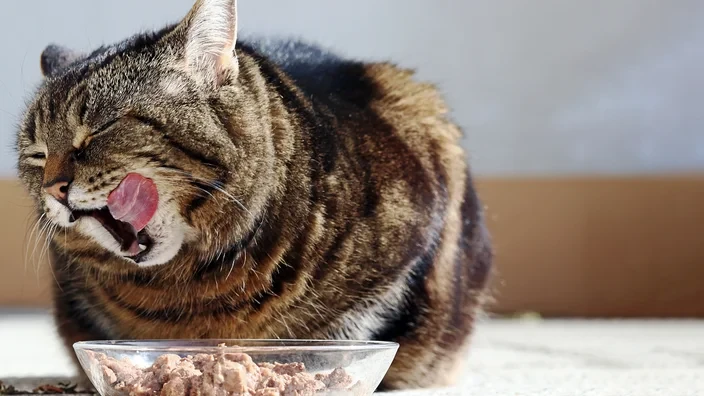Helping A Chubby Kitty: A Guide For Healthy Cat Weight

Cats, with their soft purrs and fuzzy coats, are beloved companions for many. But, just like us humans, our feline friends can sometimes pack on a few extra pounds. It's essential to understand that a cat's weight isn't just about looks—it's a significant indicator of their overall health. This guide is here to provide clarity on a cat's ideal weight, why it's crucial, and how to ensure your kitty remains in the healthiest shape.
Why a Healthy Weight Matters
A Health Indicator: Weight isn't just a number; it's a mirror reflecting a cat's internal health. Cats, being the secretive creatures they are, often hide when they're feeling unwell. It's in their nature, a survival instinct, to not show signs of weakness. Thus, a sudden change in weight can be an early signal of underlying health issues.
Potential Health Risks: Both underweight and overweight statuses come with their set of health concerns. An underweight cat might be battling issues like dental problems, kidney diseases, or thyroid imbalances, especially in older cats. On the other hand, an overweight kitty is more susceptible to conditions like diabetes, heart diseases, and joint problems.
Quality of Life: A cat at its ideal weight is more active, playful, and generally happier. Excess weight can hinder their ability to perform natural behaviors, such as climbing or jumping, leading to a diminished quality of life.
How to Determine Your Cat's Weight Status
Veterinarians have a tool called the Body Condition Score (BCS) to evaluate a cat's weight. This method involves two simple steps:
- Visual Examination: Observe your cat from the side and from above. An ideally weighted cat should exhibit a natural waist when viewed from above.
- Tactile Examination: Gently run your hands over your cat's ribs and back. The ribs shouldn't be protruding but should be easy to feel. There should be a thin layer of fat over them, but not so much that it hinders your ability to sense the ribs.
Now, based on this BCS, your cat might fall into one of three categories:
- Underweight: The ribs and spine are easily visible and can be felt with no fat layer. The base of the tail might show prominent bones, and there is an extreme waistline when viewed from above.
- Ideal Weight: The ribs are palpable with a slight fat layer. The base of the tail feels smooth, and there's a visible waistline behind the ribs. From the side, the area behind the ribs is smaller than the chest.
- Overweight: It's challenging to feel the ribs due to excess fat. The base of the tail is padded with fat, and there's no visible waist. From the side, the cat might exhibit hanging belly fat.
It's essential to remember that these are general guidelines. Individual cats might vary, and it's always best to consult with a vet to get a precise evaluation.
Understanding the Appropriate Weight Range
Cats, like humans, come in various sizes and builds. A healthy weight for one cat might be overweight for another. Generally, domestic cats weigh:
- Males: 10-12 lbs (or approximately 4.5-5.4 kg)
- Females: 6-10 lbs (or approximately 2.7-4.5 kg)
However, these are average numbers. Some breeds like Maine Coons can weigh much more and still be healthy. It's crucial to consult with your vet to understand your cat's ideal weight range. To get you started, including tips on how to weigh your cat at home, be sure to check out our article on the subject entitled, Ideal Weight For Cat By Breed.
Helping Your Cat Achieve a Healthy Weight
1. Diet: Ensure you're feeding your cat high-quality cat food. Measure portions to avoid overfeeding and consider consulting your vet about the best dietary choices. If you are looking for homemade diet cat food be sure to check out: Recipes For Overweight Cats .
2. Playtime: Encourage play! Cats are natural hunters. Toys that mimic prey, like feather wands or laser pointers, can motivate them to move.
3. Environment: Cats love to climb. Cat trees or elevated perches can be a great addition to encourage physical activity.
4. Regular Check-ups: Regular vet visits will help monitor your cat's weight and overall health. They can also provide guidance on any dietary or lifestyle changes.
5. Be Patient: Weight loss, if needed, should be gradual. Rapid weight loss can lead to other health issues.
A cat's weight is a window into their overall health and well-being. While it might seem challenging initially, with consistent efforts, knowledge, and guidance, ensuring your feline friend stays in the pink of health becomes a gratifying journey. Remember, every purr, playful pounce, and contented curl at the foot of your bed is a sign that your efforts are making a world of difference in your cat's life.